ASRock Industrial NUC BOX-155H Internal Hardware Overview
Inside, this is a very standard layout for a mini PC. Here we can see the NUC-155H motherboard with two SODIMM slots, WiFi built-in, and then two additional M.2 slots.
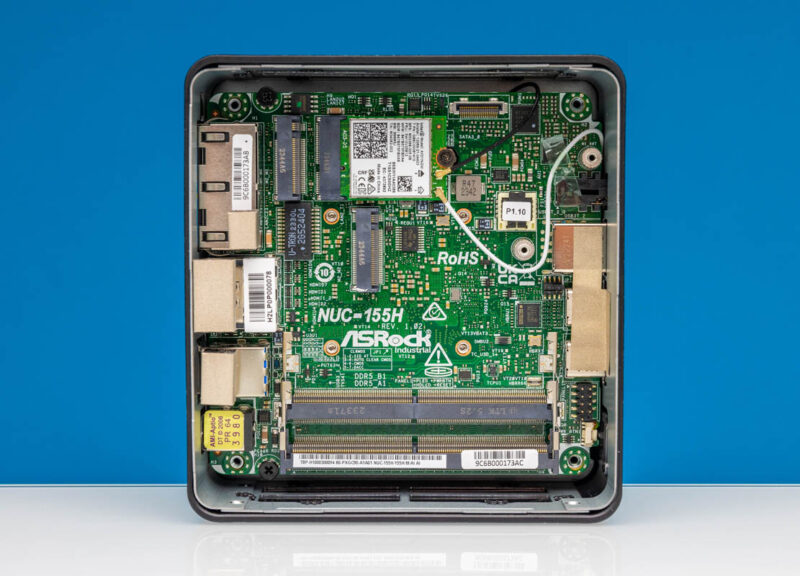
The included WiFi is an Intel AX211 unit so this is WiFi 6E. To the top right of the WiFi module, we can see a SATA data and power connector that we will get to shortly. To the left and bottom, we can see the M.2 SSD spaces.
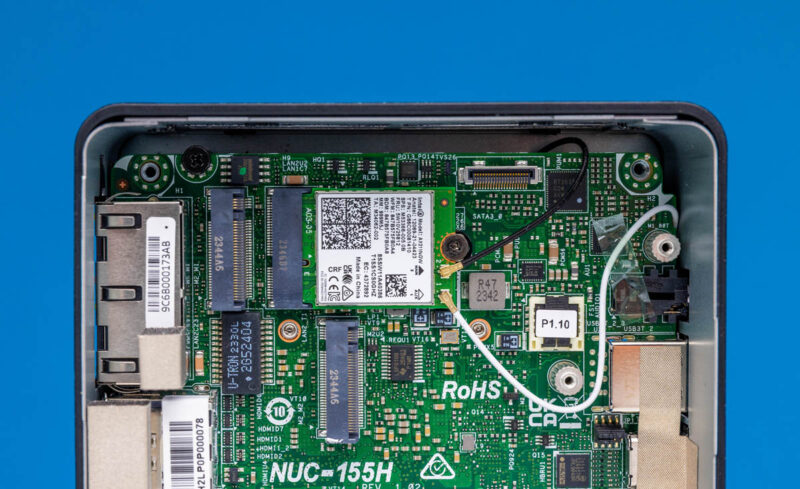
Here is the installation with a single M.2 2280 (80mm) PCIe Gen4 x4 SSD. One can add two M.2 SSDs since there is also a M.2 2242 slot just below this. Using VMD, this allows for RAID 0 or RAID 1.
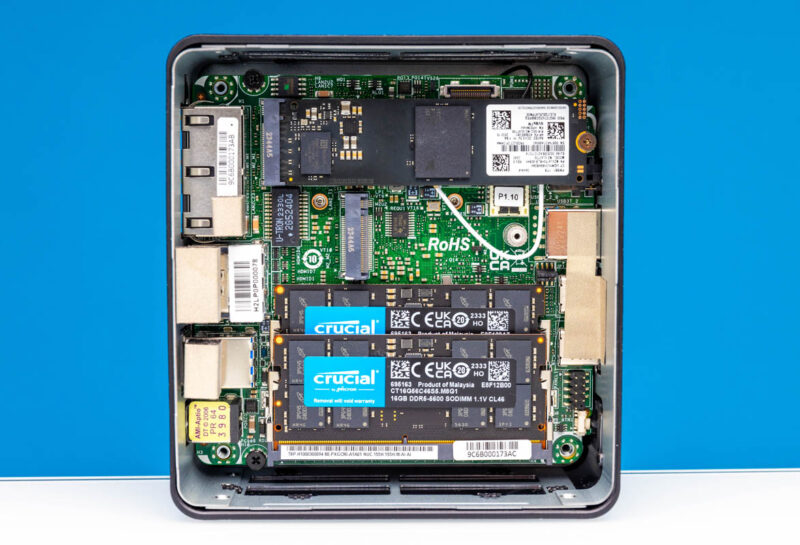
The memory is DDR5-5600, and in the photo, we have Crucial SODIMMs installed. We tested up to 2x 48GB so while the photo is the 32GB configuration, one can go up to 96GB in this small form factor.
On the subject of SSDs, there is actually a third slot. That third slot is a 2.5″ mounting point on the bottom cover. ASRock Industrial provides a small SATA data and power cable to put a drive here. While three drives can fit, we are not sure this is the best idea because of the other feature of the bottom cover.
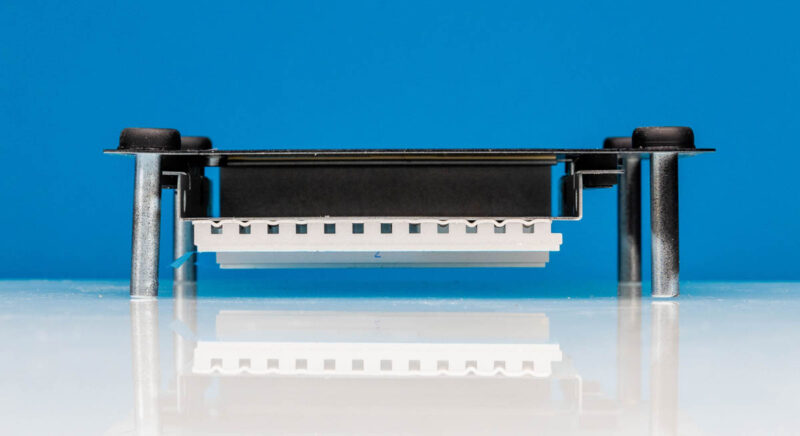
The bottom cover also has thermal pads designed to make contact with the NVMe SSDs and DDR5 SODIMMs. If you look at this photo and compare it to the internal configured view above it should make sense where the thermal pads covered in blue make contact.
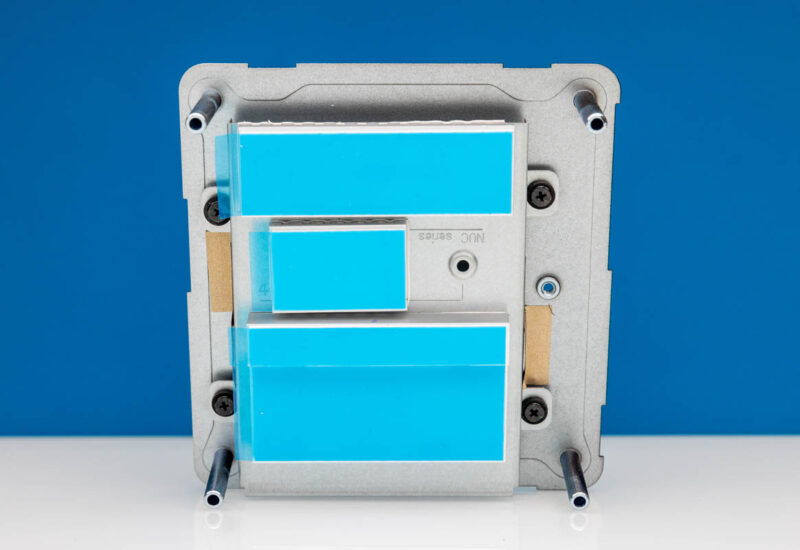
We should also note that the DDR5 SODIMM contact areas are very different than what we have seen previously. There is a slender slice that extends past the first SODIMM and down to the second SODIMM. That is a bit strange since it means the top memory module gets more cooling than the bottom, but at least it is something. There is not a fan on the bottom side of the chassis.
Intel Core Ultra 7 155H Performance
The Intel Core Ultra 7 155H is a very different CPU. This effectively has three types of CPU cores that you may not see if you looked at the lscpu output for it.
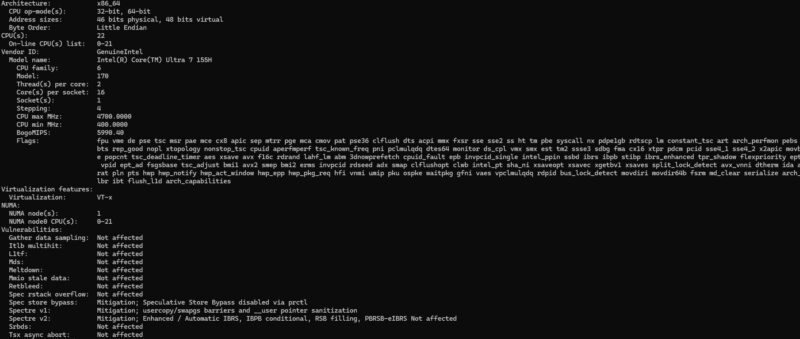
Here is an example of the core topology. We can see the performance P-cores, then the two clusters of four efficient E-cores. At the bottom right of the topology we have the two low power E-cores.
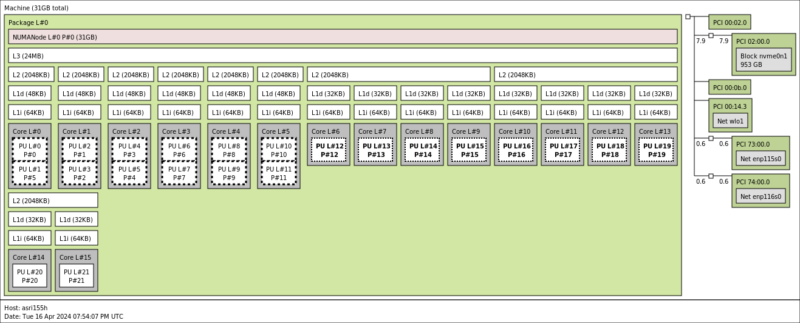
Sometimes referred to as the low power island E-cores, here is a quick look at the core-to-core latency. One can see on the bottom 20/21 lines that we have much higher latencies going to and from these cores. That is by design, but it makes things a bit more interesting. There are almost three categories of CPU cores in this system, not just two.
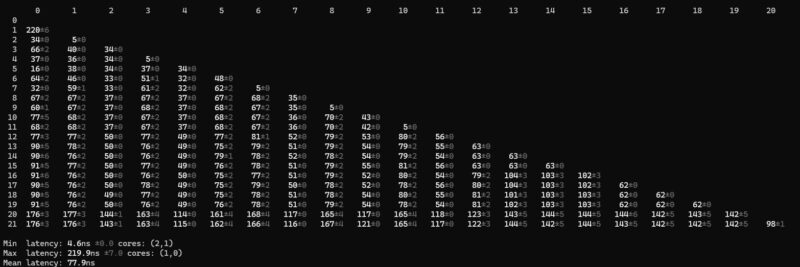
Python Linux 4.4.2 Kernel Compile Benchmark
This is one of the most requested benchmarks for STH over the past few years. The task was simple, we have a standard configuration file, the Linux 4.4.2 kernel from kernel.org, and make the standard auto-generated configuration utilizing every thread in the system. We are expressing results in terms of compiles per hour to make the results easier to read:
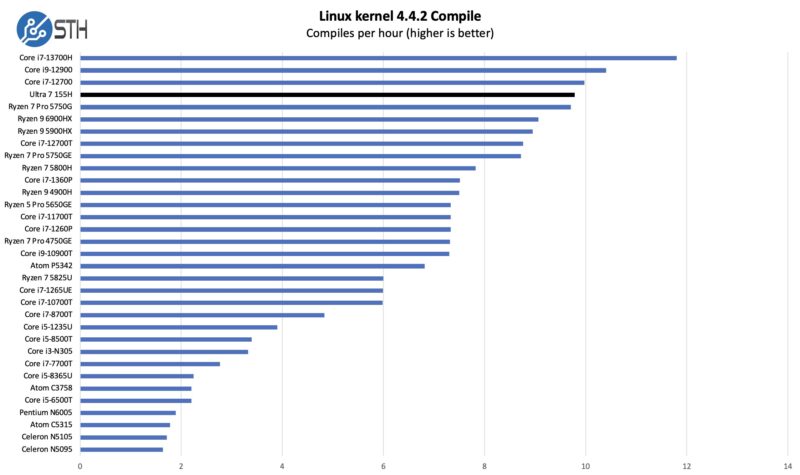
Overall, this is decent performance from the new part. We were a bit worried at first that the scaling would be way off given the different core configurations, but that was not the case to any strong extent.
7-zip Compression Performance
7-zip is a widely used compression/ decompression program that works cross-platform. We started using the program during our early days with Windows testing. It is now part of Linux-Bench.
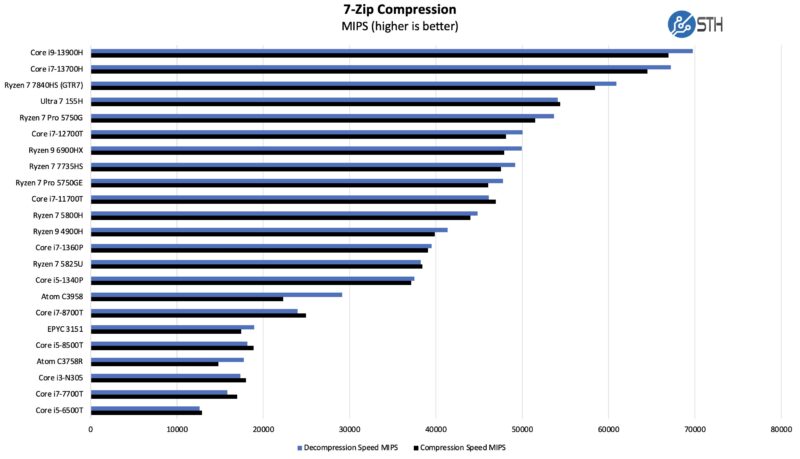
We are starting to see a pattern here in mini PC CPUs. This is not top charting performance, but it is still a very good performance given the power consumption of this box.
OpenSSL Performance
OpenSSL is widely used to secure communications between servers. This is an important protocol in many server stacks. We first look at our sign tests:
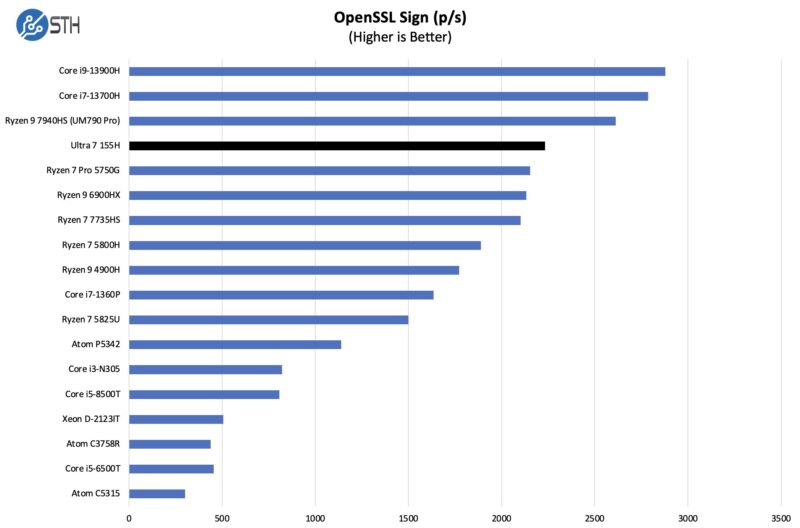
Here are the verify results:
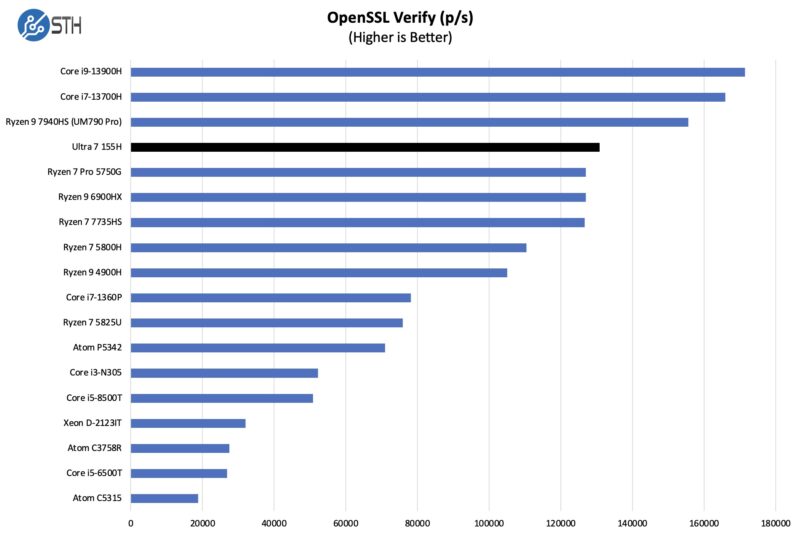
Again, we have some solid results here. This chip is notably faster between higher core counts and newer generation E-cores than the recent Intel Atom P5342 that we just looked at in an embedded platform.
Geekbench 5 and 6 Results
Just so you can easily compare this to your own system, we have a number of Geekbench 5 and 6 results.
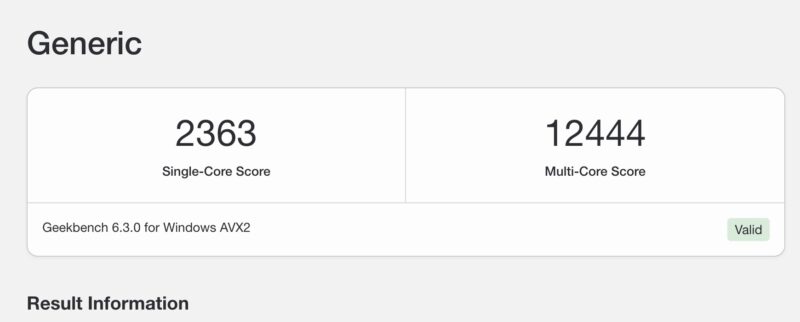
Linux Standard BIOS Mode Geekbench Results
- Geekbench 6 https://browser.geekbench.com/v6/cpu/5745503
- Geekbench 5 https://browser.geekbench.com/v5/cpu/22403854
Windows Performance BIOS Mode Geekbench Results
- Geekbench 6 https://browser.geekbench.com/v6/cpu/5760273
- Geekbench 5 https://browser.geekbench.com/v5/cpu/22406515
To make things a bit more fun, we used standard/ balanced mode under Ubuntu and performance mode under Windows just to give some options for folks to use in comparisons. Note Performance and Balanced Windows power plans had a <2% delta when Performance BIOS mode was selected.
League of Legends and NPU AI Inference Using AI Guru Software
As a quick note, we ran this at 4K resolution to see if League of Legends was playable without sacrificing resolution and while encoding the video in 4K. It generally ran over 80fps and in the 60-100fps range, so that was a win for casual gamers.

In the video, we also showed GPU and NPU-based AI inference performing facial detection on a live 4K video feed from a Sony FX30 with an inception-style display output. You can check the video to see those tests in action.
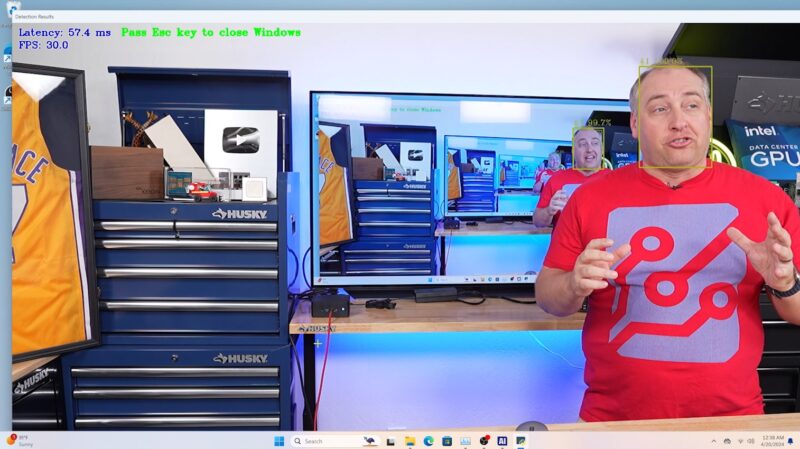
Next, let us get to our power consumption and noise.


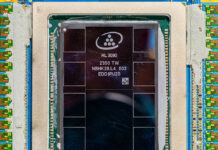

$700 Barebones?! Seriously? I swear, the rising cost of GPU MSRPs *coughnvidiacough* has shown manufacturers that consumers will pay increased prices across the board to the point that you now are paying a bit under $1k (after tax) to get a box that is unusable without another $400-500 worth of components just to get it running.
I won’t let Nvidia take all the blame though, as Intel has been bleeding money trying to keep up with AMD for years now (via R&D, Fab expenditure, and deals (aka subsidies) with resellers to carry their CPUs in laptops, tablets etc). And since Apple dropped Intel when they released the M1, Intel lost even more $. Now they’re passing the cost of all those endeavors to us, individual consumers. They can’t raise prices for enterprise too much because AMD has them completely beat there with TR and Epyc, so we get this $700 paperweight instead.
Bit of a shame they saddled it with only a 2.5G NIC, when 10G has been out for decades now and higher end stuff is already 25G. Seems a shame to make something that can perform well but then only give it a slow interface to the outside world.